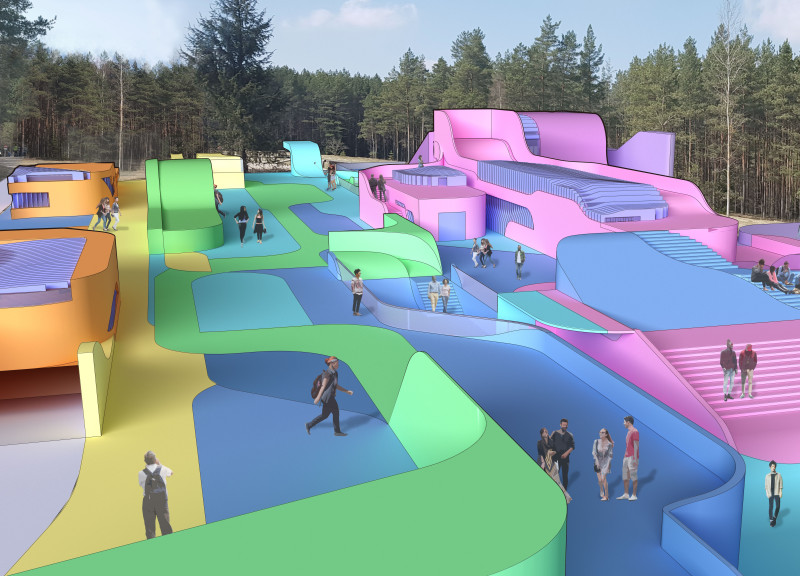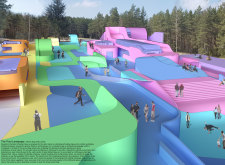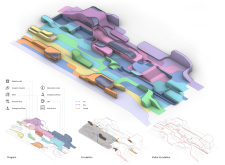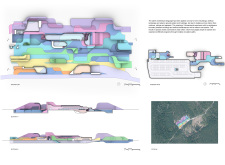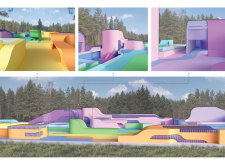5 key facts about this project
At its core, the project represents a synthesis of architecture and landscape, where the constructed forms harmonize with the surrounding ecological context of Kemeri National Park. It is a space designed for visitors to appreciate the wetlands and diverse ecosystems, encouraging exploration and learning about the delicate balance of these habitats. The visitor center provides various facilities, including educational exhibits, informal gathering areas, and essential services for nature enthusiasts, ensuring it functions as a comprehensive resource for nature exploration.
The design emphasizes fluidity through its dynamic shapes and vibrant color palette, which encourages a sense of movement and flow throughout the site. The undulating forms are reminiscent of the natural contours of the landscape, offering a visual and experiential connection to the bog environment. The use of bright colors adds an inviting quality, differentiating the visitor center from the natural surroundings while simultaneously drawing visitors in. This design approach seeks to break down the barriers between indoor and outdoor spaces, allowing for a seamless transition where visitors can feel actively engaged with their surroundings.
Integrating various architectural elements, the project features large windows and open spaces that maximize natural light and provide unobstructed views of the stunning landscape. This design choice fosters a deeper connection to the environment, encouraging visitors to immerse themselves in the natural world while inside the building. Additionally, transparent materials are likely incorporated to maintain a visual dialogue with the outdoors, allowing the architecture to adapt and respond to changing weather conditions and seasonal variations.
Accessibility is a crucial consideration in the design, as pathways and circulation routes are thoughtfully planned to accommodate both pedestrian and vehicular traffic. This focus on inclusivity ensures that visitors of all abilities can engage with the center and its surroundings effectively. The soft transitions between various spaces promote exploration, leading visitors on a journey through the facility while highlighting the importance of the natural context.
Unique to this architectural project is the emphasis on ecological awareness and sustainability. By embedding educational features within the design, the visitor center serves as a platform for raising ecological consciousness among visitors. The proposal reflects a dedication to promoting sustainable practices by likely incorporating eco-friendly materials and construction methods. The thoughtful integration of green technologies and systems might also contribute to minimizing the building's environmental footprint, further reinforcing the project's commitment to ecological stewardship.
The architectural design ideas presented in the Kemeri Bog Visitor Center serve to illustrate a modern approach that respects and celebrates nature, emphasizing the role of architecture in facilitating meaningful interactions with the environment. By encouraging visitors to engage with the richness of the Kemeri wetlands and fostering a sense of responsibility towards conservation, the project exemplifies how architecture can play a pivotal role in promoting ecological awareness.
For a deeper understanding of the project, interested readers should explore the architectural plans, sections, and designs available in the project presentation. These resources provide valuable insights into the architectural ideas and design elements that contribute to the overall vision of the Kemeri Bog Visitor Center, highlighting its significance as a benchmark for future architectural endeavors in natural settings.


